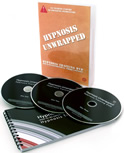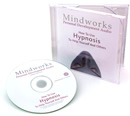
Hypnosis is derived from the Greek word hypnos, and is described in the Merriam-Webster Dictionary as an induced state that resembles sleep and in which the subject is responsive to suggestions of the inducer (hypnotist or hypnotherapist).
Going by the definition, hypnosis is brought on artificially either by external (another person) or internal (self-hypnosis) means. Presently, hypnosis and its underlying effects on mental and physical improvement of man is the subject of experiment and methodical study by men of science, physicians or physiologists.
Passages in the Bible and the Talmud indicate that the phenomena of induced sleep states, visions of spiral wheels, cures by Rabbis (known as sorcery) in early Christian era, miraculous cures which could be due to suggestion, and creation of illusions by rabbis as reported in the Talmud are recorded references of hypnosis – more than 2,000 years ago. Biblical and Talmudic references to hypnosis (hypnotic phenomena) are intermingled with treatments of psychiatric illnesses.
Even Eastern religions and philosophies have their own recorded references about hypnosis. A Nepalese shaman drums himself into a trance state, demonstrating an ability to enter and leave an altered state of consciousness and control experience; the meditation of a Buddhist monk is a training awareness to examine experience as minutely as possible, in effect a heightened awareness (Vipassana); a yoga practitioner engages in concentration, focuses on a fixed stimulus and holds it unwaveringly, until a sense of unity with the object and ultimately with the Self is achieved.
A comparison of the recorded references of hypnosis from both Western and Eastern cultures reveal that Western experience is primarily derived almost exclusively from the waking state; Eastern experience draw their view from induced dreams, meditative, or contemplative states. Interestingly, most Eastern references can be termed as self-induced (self hypnosis) while Western references are mostly externally induced hypnosis.
An analysis of East-West recorded references on hypnosis can bring about a better understanding of hypnosis because experiences can be compared and analyzed based on indetified and quantifiable phenomena of control, awareness of environment, concentration, mental energy, emotion, identity, out-of-body experience and content of experience. In recognizing the common elements in of different religions and philosophies, we also recognize multi-state psychologies and philosophies.
Easterners who practice hypnosis have learned to manipulate and build on an individual’s inherent ability to bring about self-resolution of life's problems and alleviation of suffering through altered states of consciousness such as dreams, trance states, dissociations, and mystical experiences of various sorts which are cultivated for therapeutic purposes. They claim that an individual’s healing mechanism develops spontaneously and reaches its peak when an individual is distressed but it has to be directed from without.
The Catholic Church, since the mid-19th century did not contravene the advantages of hypnosis but rather warns the faithful to be prudent on the matter. "The…mere act of employing physical means otherwise permissible, is not morally forbidden, provided that it does not tend to an illicit end or one which may be in any manner evil" – Response of the Holy Office, 2 June, 1840. ‘Hypnotism is tolerated, in theory and in practice, to the exclusion of phenomena which would certainly be preternatural.’ This is the opinion of most theologians of the Catholic Church, and it is the utterance of reason.
However, aside from the Church, civil authorities are also concerned in order to preclude accidents resulting from the use of hypnotism. Most western countries have passed laws that effectively limited the practice of hypnosis per se. Denmark and Germany even passed laws making the diploma of Doctor of Medicine a pre-condition for the practice of hypnosis.
 Thanks for visiting this blog. My name is Felix and I'm a part-time magician who is also interested in NLP and hypnosis. For more infos on hypnosis, please visit my website:
Thanks for visiting this blog. My name is Felix and I'm a part-time magician who is also interested in NLP and hypnosis. For more infos on hypnosis, please visit my website: 

No comments:
Post a Comment